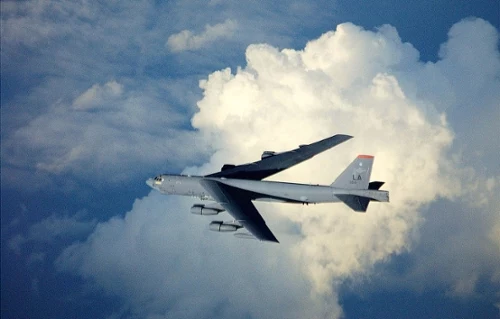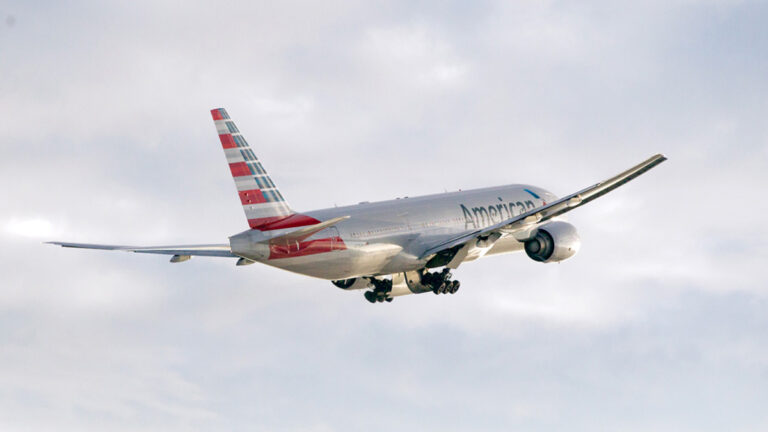Russia: The US tried to violate the border. Fighter jets were scrambled
Russian fighter crews have identified the air target as a pair of US Air Force B-52N strategic bombers over the Barents Sea,” the Russian Defense Ministry said in a statement. The Federation decided to urgently scramble a pair of fighters to neutralize the potential threat. The American side has not commented on the Russian reports.
The Russian Ministry of Defense issued an urgent statement providing details of the latest action in the Barents Sea. MiG-29 and MiG-31 fighters were to prevent two American W-52Н strategic bombers from violating the state border .Russia. American bombers near the border? Announcement
As the Russian fighters approached, the American strategic bombers adjusted their flight course and then turned away from the state border of the Russian Federation,” the ministry said in a statement. After the action, the MiGs returned to their home airfields.
The Russian Ministry of Defense has reported a significant incident involving their fighter jets and US Air Force strategic bombers over the Barents Sea. According to a statement released by the ministry, Russian fighter crews identified the air targets as a pair of B-52H strategic bombers operated by the United States Air Force.
The encounter took place when the Russian air defense systems detected the American bombers approaching the state border. In response, the Russian military decided to scramble a pair of their own fighters, comprising MiG-29 and MiG-31 aircraft, to intercept and monitor the potential threat. The Russian Ministry of Defense emphasized the urgency of this action, highlighting the importance of protecting national airspace.
As the Russian fighters approached, the American bombers altered their course. The ministry’s statement detailed that the B-52Hs adjusted their flight path and eventually turned away from the Russian state border. This maneuver by the American bombers effectively de-escalated the situation, allowing the Russian fighters to return to their home airfields without further incident.
The Barents Sea, located off the northern coasts of Norway and Russia, has long been a strategic area of interest for both NATO and Russia. The region is known for its significant military presence and frequent reconnaissance missions by both sides. The presence of B-52H bombers, which are capable of carrying nuclear weapons, near Russian airspace underscores the ongoing military tensions and the strategic posturing between the two countries.
While the Russian Ministry of Defense has been vocal about the incident, there has been no immediate comment from the American side. The lack of a response from the US could be interpreted in various ways, ranging from an effort to downplay the incident to a strategic decision to avoid escalating tensions through public statements.
This encounter is not an isolated incident but part of a broader pattern of military interactions in the region. Both Russian and NATO forces frequently conduct patrols and training exercises near each other’s borders, leading to regular encounters and sometimes tense stand-offs. The Barents Sea, in particular, is a hotspot for such activities due to its proximity to key naval and air bases for both Russia and NATO member states.
The interception involved Russian MiG-29 and MiG-31 fighters, both of which are integral parts of Russia’s air defense capabilities. The MiG-29 is known for its agility and versatility in air combat, while the MiG-31 is a long-range interceptor designed to engage high-speed targets at great distances. The deployment of these specific aircraft suggests a calculated decision to use a combination of speed, reach, and combat capability to effectively address the perceived threat.
On the other hand, the B-52H Stratofortress is a long-range, subsonic, jet-powered strategic bomber that has been a cornerstone of the US Air Force’s strategic bomber fleet since the 1950s. Despite its age, the B-52H has been extensively upgraded over the years and remains a formidable component of America’s strategic deterrent, capable of carrying both conventional and nuclear payloads.
This incident highlights the fragile nature of international relations in regions with high military activity. Each encounter carries the risk of miscalculation, which could potentially lead to unintended escalation. The careful monitoring and controlled responses by both sides in this particular incident reflect an understanding of these risks and a mutual interest in avoiding direct conflict.
Military analysts suggest that such encounters, while routine, are significant in demonstrating both capability and resolve. For Russia, the swift response showcases its readiness to defend its airspace, while for the US, the presence of strategic bombers near Russian territory serves as a reminder of its global reach and military prowess.
These interactions also provide valuable data for both sides. The Russian military gains insights into the operational patterns and capabilities of US bombers, while the US can observe Russian air defense response times and tactics. This ongoing cat-and-mouse game is a critical component of modern military strategy, where information and preparedness are as important as firepower.
As geopolitical tensions persist, especially between NATO and Russia, such incidents are likely to continue. The key challenge for both sides will be to manage these encounters in a way that maintains stability and prevents accidental escalations. Diplomatic channels and established communication protocols play crucial roles in this process, ensuring that both sides can address and de-escalate potential conflicts efficiently.
In conclusion, the interception of US B-52H bombers by Russian fighters over the Barents Sea is a clear example of the ongoing military vigilance and strategic maneuvering that defines modern international relations. While this incident was resolved without conflict, it serves as a reminder of the delicate balance of power and the importance of maintaining open lines of communication between military forces worldwide.
N






